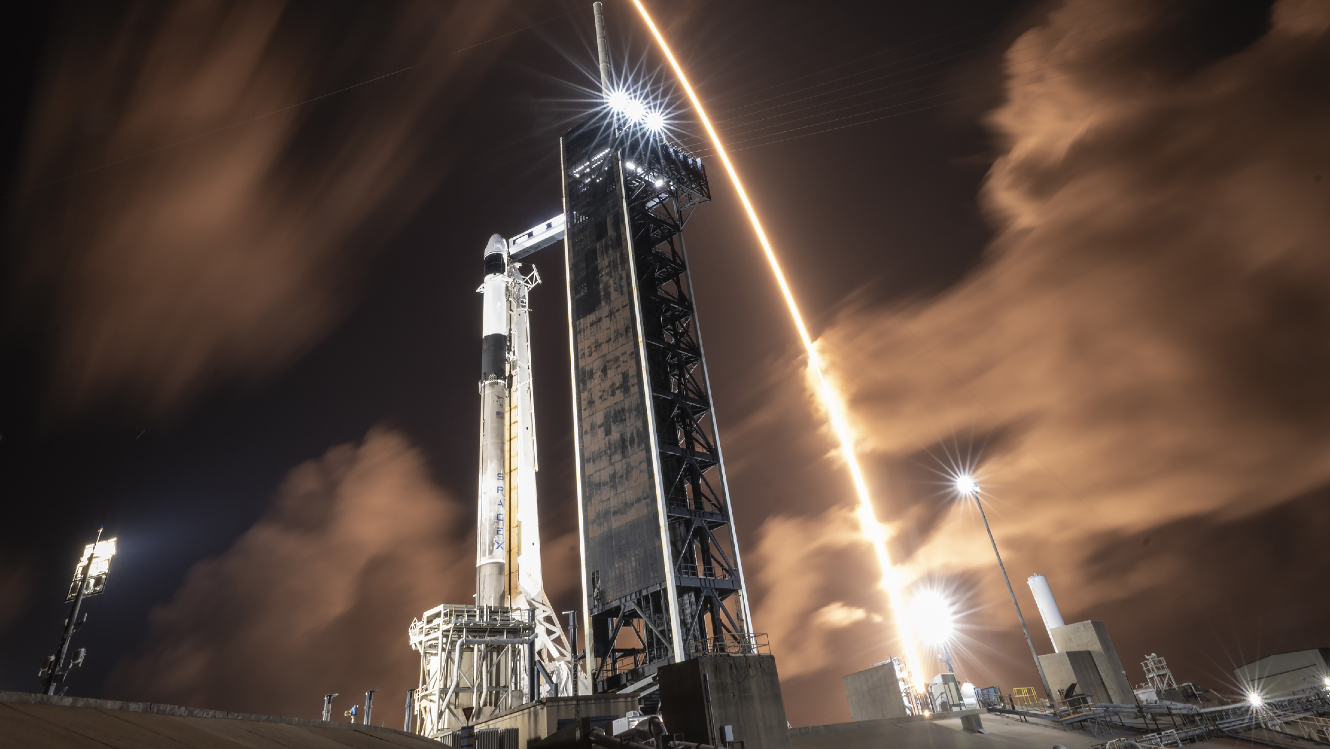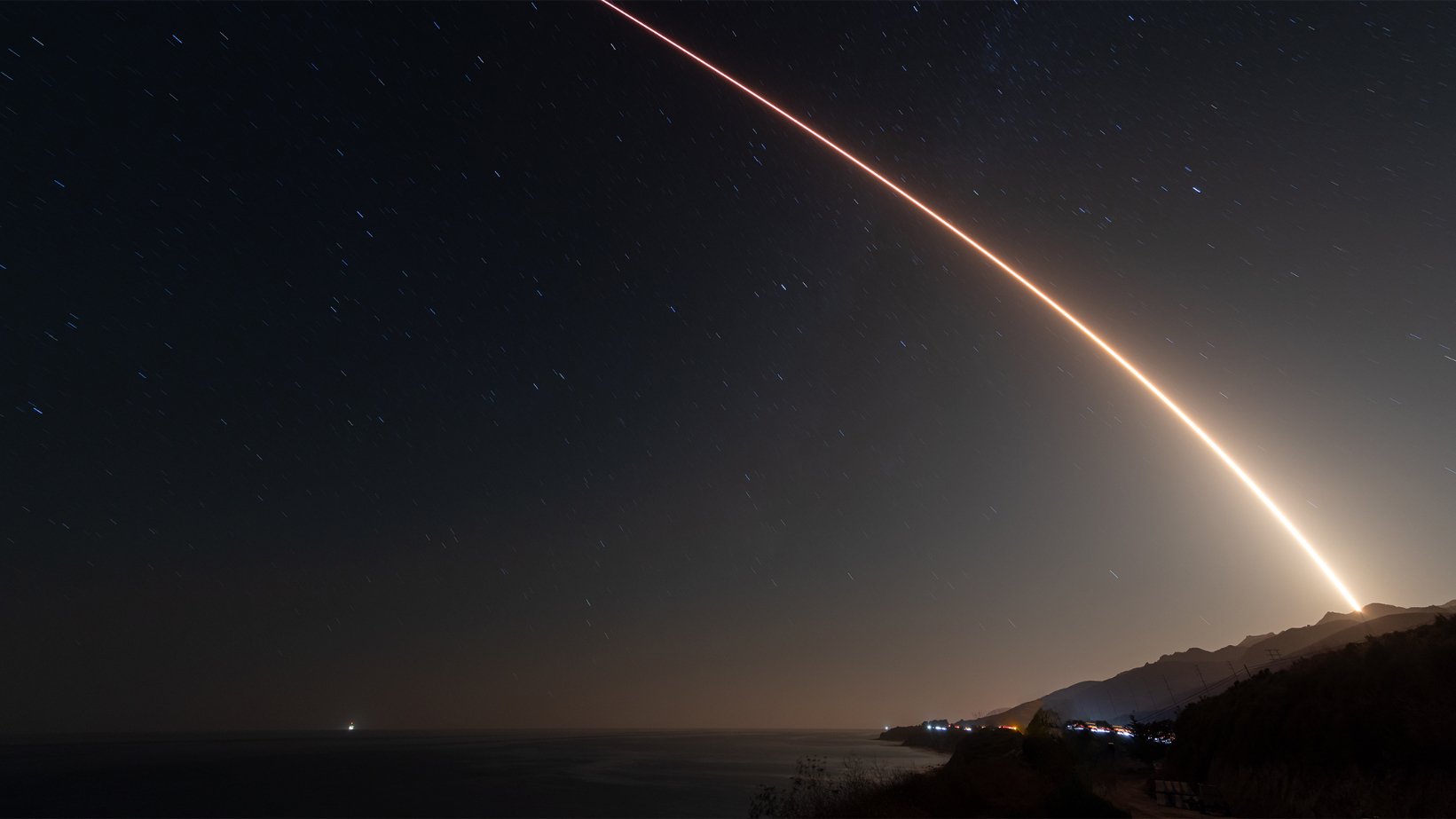
SpaceX launched two Falcon 9 rockets in just over an hour early Saturday (Aug. 31) and nailed back-to-back booster landings three days after a recent failure.
The two Falcon 9 launches — which lifted off from Florida's Cape Canaveral Space Force Station and California's Vandenberg Space Force Base, respectively — delivered a total of 42 Starlink internet satellites into orbit, with each rocket's first stage acing an offshore landing. The successful SpaceX landings followed a failed Falcon 9 rocket landing on Aug. 28 during a booster's 23rd flight, a record for SpaceX.
"Great work by the SpaceX team," SpaceX CEO Elon Musk wrote on X (formerly Twitter) after the double launch.

The space action began in Florida with the stunning predawn launch of SpaceX's Starlink 8-10 mission, which lifted off at 3:43 a.m. EDT (0743 GMT) of a Falcon 9 rocket carrying 21 Starlink satellites, 13 of which are equipped with new "Direct to Cell" capabilities to connect directly with smartphones on Earth. (SpaceX has a deal with T-mobile to provide direct-to-cell access as it builds a vast megaconstellation of Starlink satellites.)
The first-stage booster on the flight completed its 18th launch and landing after flying 13 Starlink missions, a Dragon cargo flight for NASA and three commercial satellite missions. It touched down on the SpaceX drone ship Just Read The Instructions in the Atlantic Ocean.
Falcon 9’s first stage lands on the Just Read The Instructions droneship, completing this booster’s 18th launch and landing pic.twitter.com/zScs23zrAQAugust 31, 2024
SpaceX followed its Florida Starlink launch with the Starlink 9-5 mission, which lifted off just 65 minutes later at 1:48 PDT (4:48 a.m. EDT/0848 GMT) from Vandenberg's Space Launch Complex 4 East.

That mission delivered another 21 Starlink satellites, including 13 more Direct to Cell satellites, into orbit on what was the ninth flight of its Falcon 9 booster. It touched down on SpaceX's drone ship Of Course I Still Love You in the Pacific Ocean.
Falcon 9 lands on the Of Course I Still Love You droneship pic.twitter.com/0ta7MLEhhKAugust 31, 2024
The back-to-back Starlink mission launches came a day after SpaceX received clearance from the FAA to resume Falcon 9 launches even as the agency investigates the Aug. 28 booster landing, which occurred during yet another Starlink launch. That mission successfully delivered 21 Starlink satellites to orbit, but its booster appeared to catch fire and topple over after landing on its drone ship.
Photos of the booster's debris as the ship return to port in Cape Canaveral by photographer John Kraus showed only the rocket's charred rocket engine section and broken landing legs remaining.
Not much left of Falcon 9 B1062. Important to remember that with 23 flights under its belt, it completed 22 more flights than any other orbital-class rocket booster. Here's to celebrating its successful missions and to many more reuse records broken with future boosters. pic.twitter.com/3S3O1unPXMAugust 30, 2024
"The SpaceX Falcon 9 vehicle may return to flight operations while the overall investigation of the anomaly during the Starlink Group 8-6 mission remains open, provided all other license requirements are met," FAA officials wrote in a statement late Friday (Aug. 30). SpaceX made the return to flight request on Aug. 29 and the FAA gave approval on Aug. 30.
Meanwhile, SpaceX is preparing to launch its first crewed spaceflight since another Falcon 9 launch failure, which led to the loss of 20 Starlink satellites in July, which was traced to a leak on the Falcon 9's second stage. That crewed flight, called Polaris Dawn, has been delayed since Aug. 26 due to weather concerns and extra rocket checks.
Backed by American billionaire Jared Isaacman, Polaris Dawn is an ambitious private spaceflight that will attempt the world's first commercial spacewalk and make the highest orbital spaceflight since NASA's Apollo era.







